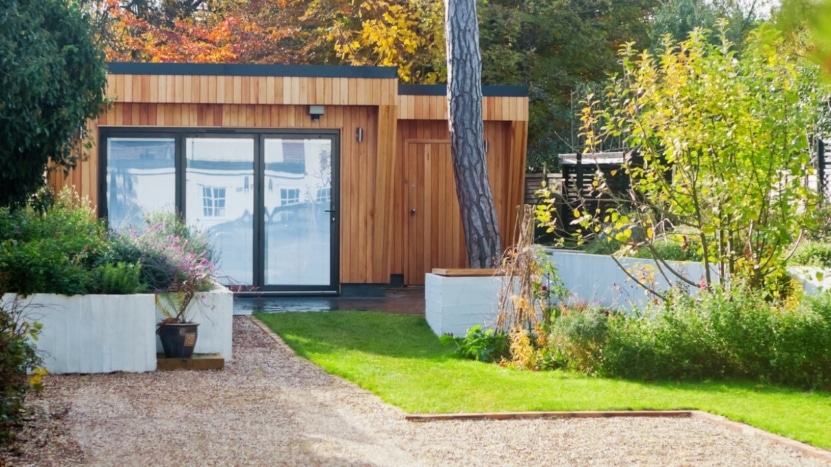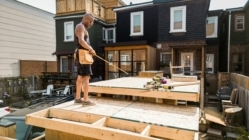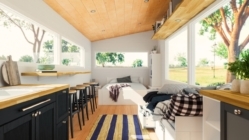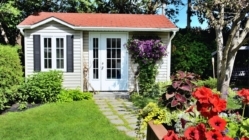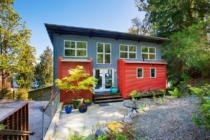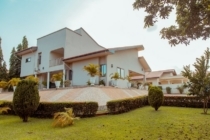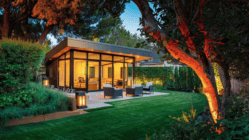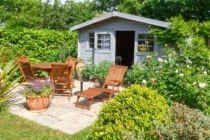The concept of Accessory Dwelling Units (ADUs) is taking off as homeowners look for creative solutions to address housing needs, income generation, and flexible living options. ADUs are also known as in-law units, granny flats, guest cottages, au pair units, and casitas. They have become increasingly popular in recent years in states like California because the legislatures have removed many of the regulatory hurdles behind them in an effort to encourage the creation of more housing stock. These changes include tremendously relaxed zoning and owner-occupancy requirements and even grants in some cases.
If you’re curious about ADUs but feeling overwhelmed by the details, you’ve come to the right place. This comprehensive guide will explore everything you need to know about ADUs – from definitions to different types, building requirements, costs, and the benefits they offer.
Understanding the Concept of ADUs
To put it simply, an Accessory Dwelling Unit (ADU) refers to a secondary housing unit located on the same plot as a main residence. It can be either attached to the main house or stand as a separate structure. Each ADU is designed to be self-sufficient with all the essential amenities like a kitchen, bathroom, and living space. This adaptive housing solution allows property owners to make the most of their space, catering to their needs while potentially adding value to their property.
The Versatility of ADUs
The beauty of ADUs lies in their adaptability. Here are just a few ways they can be used:
- Guest House: Offer comfortable and private accommodations for visiting friends and family.
- Rental Unit: Generate additional income by renting out your ADU on a short- or long-term basis.
- Home Office or Studio: Create a dedicated workspace away from the distractions of your main house.
- Multigenerational Housing: Provide a private living space for aging parents or adult children.
ADUs: Not Just Tiny Houses
While some Accessory Dwelling Units might resemble tiny houses, they offer greater design flexibility. ADUs can range in size and style, allowing you to customize them to suit your needs and complement your existing home.
The ADU Home: What’s Inside
The allure of an ADU home extends beyond its compact size. While smaller than the primary residence, ADUs, also colloquially known as ‘tiny houses’, are versatile, private, and provide a wealth of possibilities.
Despite their modest footprint, ADUs can be rich in features, boasting fully-equipped kitchens, comfortable living areas, and well-appointed bathrooms. Their layout is designed with convenience and practicality in mind, reflecting the needs and aspirations of today’s homeowners.
Whether you desire an independent space for guests, a dedicated home office, or an extra source of income through rental, an ADU home can deliver. Embrace the potential of these small but mighty structures and see how they could transform your property and lifestyle.
ADUs in Real Estate
Adding an Accessory Dwelling Unit to your property can increase its resale value and make it more appealing to potential buyers. ADUs offer flexibility and added living space – features that are in high demand in today’s real estate market. It’s not just about additional living space; the multipurpose nature of ADUs makes them attractive to potential buyers, offering possibilities for additional rental income or diverse living arrangements.
Still, the value added by an ADU is contingent on several factors. Its design, practicality, and compliance with local standards are vital aspects that can influence its contribution to property worth.
While an ADU can potentially increase a property’s value, it’s essential to understand that this isn’t an automatic outcome. Quality, utility, and adherence to regulations all play an essential role in determining an ADU’s value proposition.
Why Build an ADU?
The reasons for building an Accessory Dwelling Unit are as diverse as the homeowners themselves. Here are some of the top motivators:
Income Generation
Rent out your ADU for supplemental income. If your property has ample space, an ADU can become a source of steady income by being used as a rental unit.
Guest House
ADUs essentially function as standalone guest houses, transforming the way you welcome visitors. An ADU allows your visitors to maintain their own routines and schedules without feeling like they’re intruding on your space. Likewise, you won’t feel the need to adjust your household’s routines to accommodate them.
Aging in Place
ADUs often provide a more affordable alternative to assisted living facilities in terms of construction/rental costs and care expenses. Provide a comfortable living space for elderly parents, allowing them to maintain independence while staying close to family. Family caregivers gain peace of mind knowing their loved ones are close and safe.
Additional Space
Accommodate adult children returning home, create a dedicated workspace, or simply have more room for hobbies and guests. For those who work from home or have a creative hobby, an ADU can be fashioned into a quiet, separate workspace or studio.
By considering your specific needs and lifestyle, an ADU can be more than just an additional structure – it can be an invaluable asset that enhances your property and the quality of your life.
ADU Building Requirements
Before you start building, it’s crucial to understand the ADU building requirements in your area. These regulations govern aspects like:
- Size and Placement: Restrictions on ADU footprint and where they can be located on your property.
- Design: Potential mandates on aesthetic compatibility with your main house.
- Permits: The specific permits needed for ADU construction.
Familiarizing yourself with these requirements early on will ensure a smooth and compliant building process.
What’s crucial to remember is that these rules aren’t universally standardized. Each locality has its unique set of regulations, making it necessary to familiarize yourself with the specific requirements of your jurisdiction prior to initiating your ADU project.
Not only will this help you stay within legal boundaries, but it can also prevent any potential hiccups down the line, ensuring a smooth construction process. So, before you pick up that hammer, make sure you’ve got all your ADU requirement boxes checked.
If you have questions about financing an ADU or if you’d like the names of contractors who specialize in ADU construction, please do not hesitate to reach out to us.
Attached and Detached ADUs
When planning your ADU, you’ll need to decide whether to build an attached or detached unit.
Attached ADUs
- Cost-effectiveness: Building an attached ADU generally requires fewer resources compared to a detached unit. This stems from shared walls and utilities with the existing home and less extensive site preparation and foundation work.
- Budget-friendly Option: Attached ADUs share a wall with your main house, often making them a more budget-friendly option. The savings achieved with attached ADUs make them appealing for homeowners seeking a more affordable solution.
- Convenient Proximity: An attached ADU offers seamless access to the main house, particularly useful for elderly relatives who may require occasional assistance and short-term guest stays where frequent interaction is desirable.
- Enhanced Privacy: Even though attached, well-designed ADUs provide sufficient privacy with separate entrances and sound insulation between the main house and the ADU.
Detached ADUs
- Maximum Privacy: Detached ADUs, as standalone structures, offer a superior level of privacy for both the ADU occupants and those in the main house. This is ideal for long-term rental scenarios and family members desiring a greater sense of independence.
- Separation and Autonomy: The physical distance between the ADU and the primary residence fosters a true sense of having a separate, self-contained living space.
- Placement Flexibility: With detached ADUs, you have greater freedom to choose their location on your property. Consider factors like optimizing views or sunlight, creating distinct outdoor spaces for both the ADU and main house, and strategically placing the ADU to minimize visibility from the street.
- Potential for Increased Property Value Detached ADUs, due to their privacy and flexibility, can add significant value to your property, potentially surpassing the value added by an attached unit. The larger investment in building a detached ADU should be carefully weighed against the privacy gains and additional potential return on investment when considering your ADU project. The decision largely depends on your individual needs, budget, and the available space on your property.
Navigating Local ADU Zoning Laws and Restrictions
Zoning laws play a significant role in ADU construction. Before you start building your ADU, having a good understanding of the local government restrictions and zoning laws is necessary, as they can dictate various aspects of your ADU’s construction and use. These may include parameters such as the permitted locations for ADUs, the allowable size, the approved design aesthetics, and even the occupancy rules. Falling short of these regulations could result in penalties and potentially necessitate alterations to, or even the removal of, the ADU.
As you chart out your ADU build, familiarize yourself with these rules to ensure your project aligns with local ordinances. This will not only keep your project legally sound but also pave the way for a smooth construction process.
The ADU Construction Process
Constructing an ADU is not a simple undertaking. It involves a detailed process that moves from initial planning and designing to securing necessary permits, establishing the foundation, and finalizing the construction. Each stage necessitates meticulous attention to detail. Building an ADU involves careful planning, design, permitting, and construction. Here’s a simplified overview of the process:
- Planning and Design: Work with an architect or designer to create a plan that meets your needs and complies with local regulations. Collaborating with experienced builders or architects can be beneficial, ensuring your ADU adheres to all regulations and stands as a robust and reliable structure for years to come.
- Permits: Obtain all necessary building permits from your local jurisdiction.
- Construction: Hire a qualified contractor or explore prefabricated ADU options.
ADU Kits
For those seeking a simplified route to ADU ownership, consider the range of companies offering pre-fabricated ADU kits. These kits offer pre-designed, ready-to-construct units, simplifying the construction process. They can be an effective solution for those desiring a streamlined approach that potentially saves time and resources. Below are some popular ADU kit companies:
- Dvele: Focuses on sustainable and stylish ADU options, emphasizing efficiency and contemporary aesthetics.
- Boxabl: Offers highly modular ADU units made from steel, concrete, and foam materials, promoting durability.
- Abodu: Known for their modern, sleek designs and relatively quick delivery timelines.
- ConnectHomes (California): Specializes in modular and high-efficiency ADUs that can be delivered and installed quickly.
However, don’t forget to verify that these kits meet your local building regulations. It’s essential to ensure their compliance before committing to this path, helping you avoid possible regulatory roadblocks down the line. Working with these companies can pave the way for a less complicated construction experience, but always remember that due diligence is key to a successful ADU project.
Your Next Steps
Understanding the benefits of ADUs is a fantastic first step, but realizing your vision hinges on securing the right financing. Don’t let the potential complexities of securing funding deter you from the incredible possibilities that an ADU can offer.
At JVM Lending, we offer several specialized ADU financing options and are ready to guide you through the process. With the right financial approach, you can transform your property, expanding its potential and unlocking new pathways to accommodate your changing needs.
If you’re ready to take the next step and explore the potential of adding an ADU to your property, let JVM Lending help you pave the way with personalized financing solutions.
Reach out to us for a free consultation today, or contact us directly at (855) 855-4491 or email [email protected].

